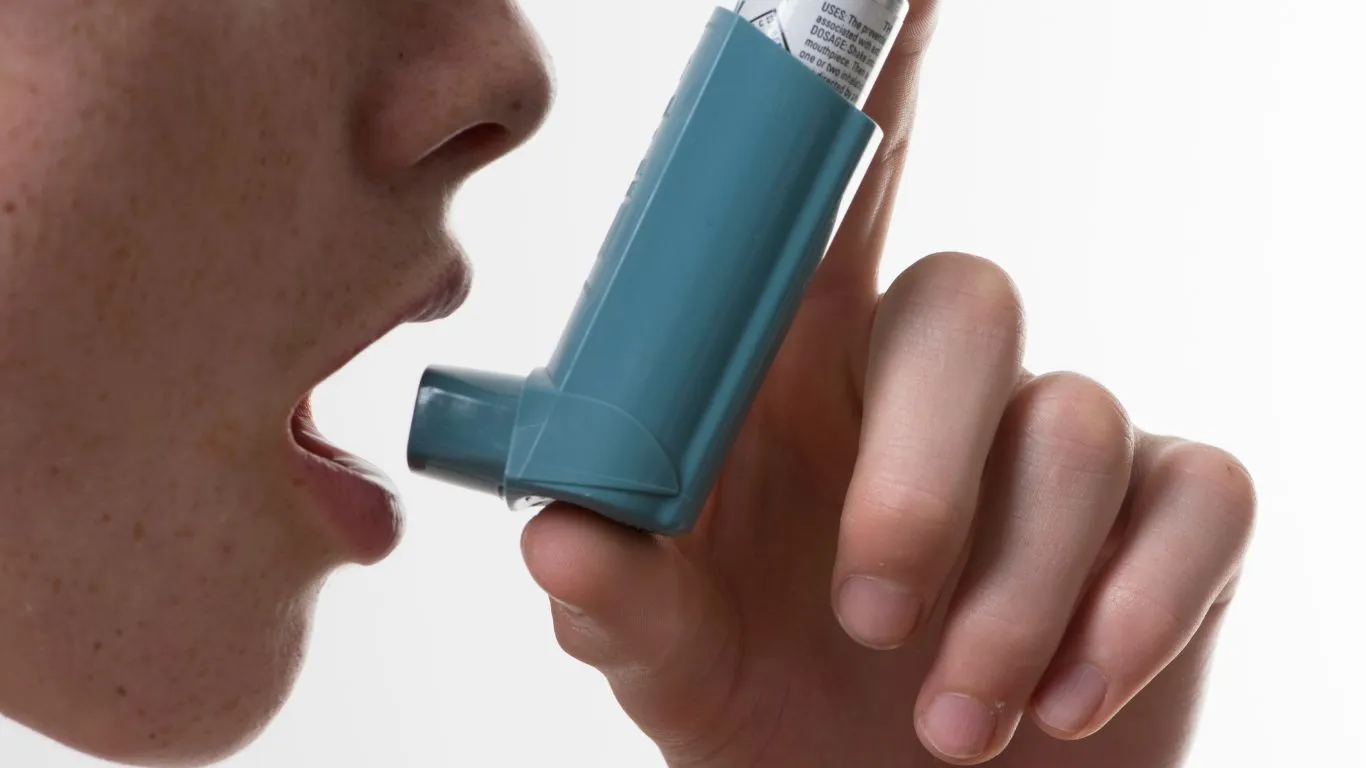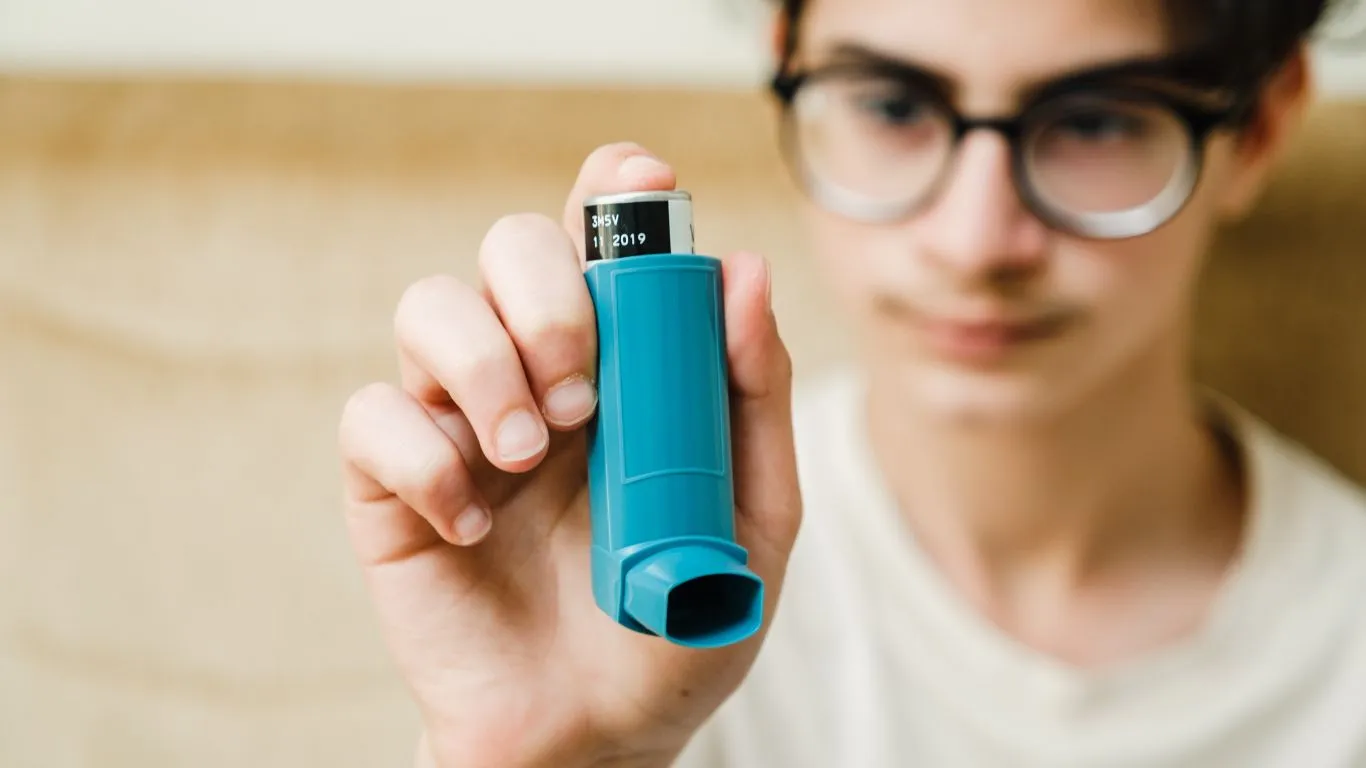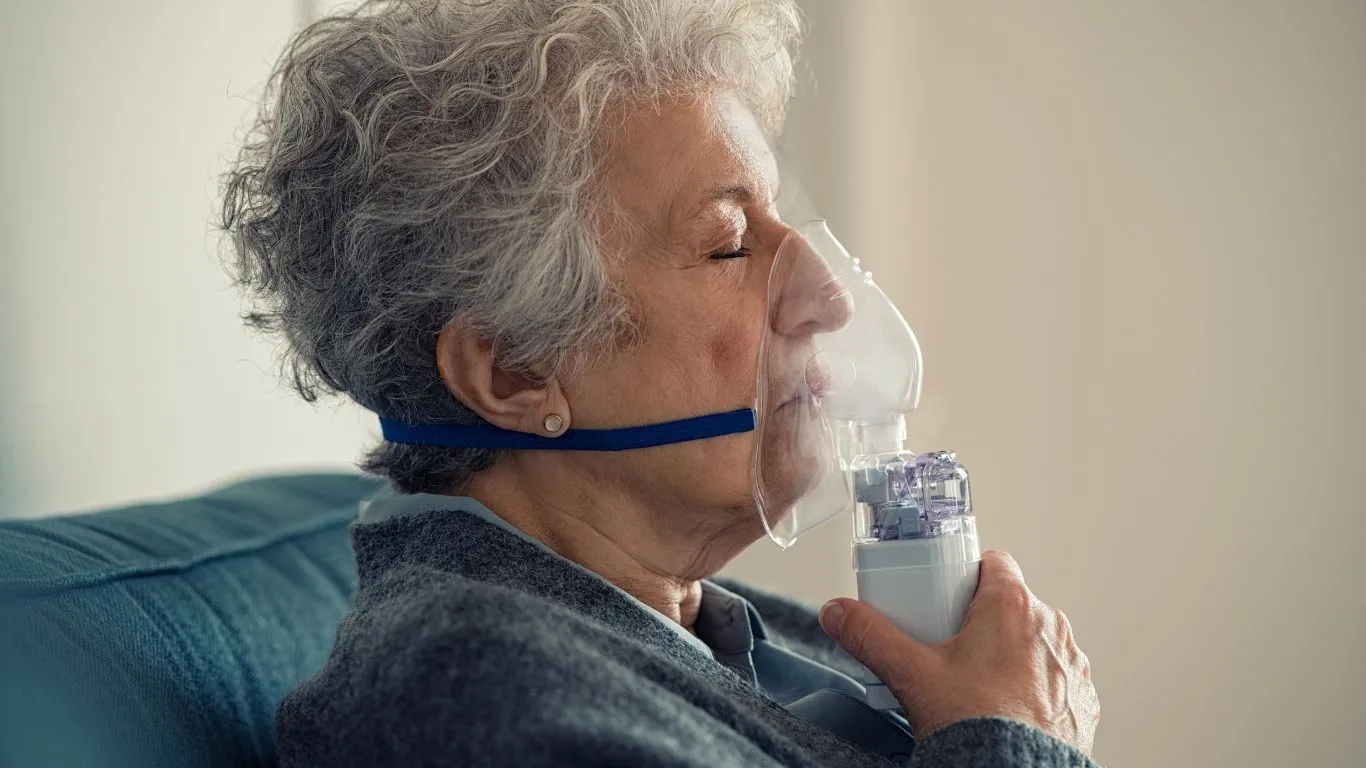Powerful Tips for Asthma Recovery After an Attack – Breathe Easier Now
Recovering from an asthma attack isn’t just about catching your breath—it’s about giving your lungs the care they need to heal properly. If you’ve ever had an attack, you know how draining it can be. As someone who has spent years working with asthma patients, I’ve seen firsthand how the right recovery plan can make a world of difference. So, let’s dive into some essential tips for asthma recovery after an attack to help you regain strength, reduce future flare-ups, and breathe easier.
Understanding What Happens to Your Lungs After an Asthma Attack
Most people don’t realize that an asthma attack isn’t just a one-time event. Even after the wheezing stops and your breathing returns to normal, your lungs are still inflamed and vulnerable. This is why post-attack care is just as important as managing symptoms during the attack.
Why Recovery Matters
After an attack, your airways remain sensitive for hours or even days. If you don’t take the right precautions, you risk triggering another episode. Proper recovery helps:
- Reduce inflammation in your airways
- Restore normal lung function
- Prevent further flare-ups
My Personal Experience with Patients
I’ve worked with asthma patients who thought they were fine right after an attack, only to experience another one within 24 hours. One of my patients, Sarah, once told me she felt completely recovered after using her rescue inhaler, but later that evening, she was back in the ER. What went wrong? She didn’t give her lungs enough time to recover properly.
Immediate Steps to Take After an Asthma Attack

1. Rest and Hydrate
Your body just went through a stressful event, so rest is essential. Find a quiet place to sit, focus on steady breathing, and avoid any triggers. Drinking water or herbal tea can help loosen mucus in your airways, making it easier to breathe.
2. Continue Using Your Inhaler as Advised
Many people think once the attack subsides, they don’t need their medication anymore. Big mistake! Your doctor may recommend using a maintenance inhaler or a short course of steroids to reduce lingering inflammation.
3. Monitor Your Breathing
Even if you feel fine, your lungs might still be struggling. Use a peak flow meter to track your lung function. If your readings remain low or symptoms return, don’t hesitate to seek medical advice.
When to Seek Medical Help

Red Flags to Watch For
- Persistent wheezing or tightness in the chest
- Shortness of breath even while resting
- Difficulty speaking in full sentences
- Blue lips or fingernails
If you notice any of these symptoms, don’t wait—get medical help immediately. Post-attack complications can escalate quickly.
Check in with Your Doctor
Even if you feel better, a follow-up visit is always a good idea. Your doctor can assess whether your medication needs adjusting and ensure your lungs are healing properly.
Adjusting Your Lifestyle for Better Recovery

1. Avoid Triggers
Right after an attack, your lungs are extra sensitive. Stay away from known triggers like dust, smoke, or strong scents. If pollen is a trigger for you, check air quality reports before heading outside.
2. Improve Indoor Air Quality
Your home should be a safe space for your lungs. Consider using a HEPA air purifier, cleaning regularly to reduce dust, and keeping humidity levels balanced to prevent mold growth.
3. Practice Breathing Exercises
Techniques like pursed-lip breathing and diaphragmatic breathing can help strengthen your lungs and improve airflow. I often recommend these exercises to my patients, and many have found them incredibly helpful for long-term asthma management.
Rebuilding Strength and Lung Function After an Asthma Attack
Now that the initial recovery phase is behind you, it’s time to focus on rebuilding your lung strength and overall well-being. The days following an asthma attack are crucial because your lungs are still healing, and giving them the right support can make all the difference. Trust me, I’ve seen patients bounce back much faster when they prioritize their lung health during this stage.

1. Gradual Physical Activity – But Don’t Rush It
One of the most common mistakes I see is people trying to get back to their normal routines too quickly. While staying active is essential for lung health, you need to ease into it. Start with light activities like walking or gentle stretching, and listen to your body.
- If you feel tightness in your chest or start coughing, slow down.
- Avoid high-intensity workouts for at least a few days.
- Consider doing breath-focused yoga to promote lung expansion.
I remember a patient, Mike, who was a fitness enthusiast. After an attack, he jumped right back into his workouts, thinking he could ‘push through.’ He ended up triggering another episode. Lesson learned—your lungs need time!
2. Prioritizing Proper Nutrition
What you eat can directly impact your lung recovery. Some foods help reduce inflammation and promote better breathing, while others can make things worse.
Foods that support lung health:
- Omega-3 rich foods like salmon and flaxseeds to combat inflammation.
- Antioxidant-packed fruits (berries, oranges) to support immune health.
- Hydrating foods like cucumbers and watermelon to keep airways moist.
Avoid: Dairy, fried foods, and processed snacks—these can increase mucus production, making it harder to breathe.
3. Staying Hydrated is Non-Negotiable
Drinking plenty of water helps thin out mucus, making it easier for your lungs to clear out irritants. If you’re not a big fan of plain water, try herbal teas like peppermint or ginger, which also have anti-inflammatory benefits.
Managing Emotional and Mental Recovery

1. The Link Between Stress and Asthma Recovery
A lot of people underestimate the mental toll an asthma attack can take. I’ve had patients tell me that even after their breathing was back to normal, they felt anxious, scared, or constantly on edge, worried about the next attack.
Stress is a well-known asthma trigger, so managing it is just as important as taking your medication. Some great ways to keep stress levels in check:
- Practicing deep breathing techniques (like box breathing).
- Trying out meditation or guided relaxation apps.
- Getting enough sleep—fatigue makes asthma symptoms worse!
2. Coping with Post-Attack Anxiety
If you’ve ever felt scared to leave the house after a bad asthma attack, you’re not alone. Many of my patients, especially those who’ve had severe episodes, struggle with anxiety about it happening again. It helps to:
- Keep a rescue inhaler with you at all times for peace of mind.
- Talk to a trusted friend or therapist about your fears.
- Gradually expose yourself to normal activities again at a comfortable pace.
One of my younger patients, Emily, went through this. After a scary attack at school, she was afraid to go back. We worked on a step-by-step plan, and with small victories—like visiting school for short periods—she slowly regained confidence. It takes time, but it’s completely doable.
Creating a Long-Term Asthma Recovery Plan

1. Reviewing Your Medication Routine
Once you’ve had an attack, it’s worth revisiting your asthma action plan with your doctor. Are you using your preventer inhaler correctly? Do you need adjustments in your treatment plan?
Some key questions to ask:
- Should I be on a daily controller medication?
- Are there any new treatment options I should consider?
- What signs should I watch for to prevent future attacks?
2. Keeping a Symptom Journal
Tracking your asthma symptoms can help you spot patterns and triggers. Note things like:
- How often you use your inhaler.
- Any changes in your breathing.
- What activities or environments seem to set off symptoms.
I’ve had patients discover surprising triggers just by keeping a simple log—one person realized their attacks always happened after visiting a friend’s house with cats. Knowledge is power when it comes to asthma management!
3. Building a Strong Support System
Dealing with asthma isn’t something you have to do alone. Let the people around you know how they can help. Whether it’s family, friends, or even an online support group, having others who understand can make a big difference in your recovery journey.
Recovery doesn’t happen overnight, but with the right steps, you can get back to feeling strong and in control of your asthma. And remember—you’re not just surviving, you’re learning how to thrive.
Preventing Future Asthma Attacks: Long-Term Strategies
Once you’ve recovered from an asthma attack, the real goal is to prevent it from happening again. I always tell my patients, “Managing asthma isn’t just about treating symptoms—it’s about staying one step ahead.” By making a few adjustments to your daily routine, you can reduce the risk of another flare-up and keep your lungs in top shape.

1. Identifying and Eliminating Triggers
Asthma triggers vary from person to person, and some are sneaky! You might think you’re avoiding what sets off your symptoms, but sometimes, the culprits are less obvious. Here’s a breakdown of the most common triggers and how to handle them:
- Dust and Allergens: Use HEPA filters in your home, vacuum frequently, and wash bedding in hot water.
- Weather Changes: Cold air and high humidity can worsen symptoms—wear a scarf over your nose in cold weather.
- Strong Scents: Avoid perfumes, cleaning chemicals, and air fresheners. Go for fragrance-free products instead.
- Pet Dander: If you have pets, keep them out of your bedroom and bathe them regularly.
One of my patients, Jason, struggled with night-time asthma attacks for years. After some detective work, we realized it was his old pillows collecting dust mites. A simple switch to hypoallergenic pillows and regular washing made a massive difference!
2. Strengthening Your Lungs with Breathing Techniques
Did you know that certain breathing exercises can actually improve lung function and make your airways more resilient? Techniques like pursed-lip breathing and diaphragmatic breathing help you control your airflow, prevent hyperventilation, and even reduce anxiety-driven asthma episodes.
Try this simple exercise:
- Inhale slowly through your nose for about four seconds.
- Purse your lips (as if you’re about to whistle) and exhale slowly for six to eight seconds.
- Repeat for a few minutes, especially if you feel short of breath.
Practicing this daily can strengthen your lungs and make breathing more efficient.
Creating an Emergency Plan for Future Attacks
Even with the best precautions, asthma attacks can still happen. The key is being prepared. Having a solid emergency plan can mean the difference between a mild episode and a trip to the ER.

1. Always Have Your Rescue Inhaler
It might seem obvious, but you’d be surprised how many people leave their inhaler at home. Keep one in your bag, your car, and by your bedside. If you use a spacer, make sure it’s within reach too.
2. Know Your Peak Flow Readings
A peak flow meter can help you monitor lung function before symptoms even start. If your readings drop below 80% of your normal range, it’s time to take action.
3. Have an Action Plan
Work with your doctor to create a written action plan that includes:
- What medications to take daily
- What to do if symptoms start to worsen
- When to call your doctor or seek emergency help
Make sure your family or close friends know your plan too—having support during an attack is invaluable.
Final Thoughts: Living a Full Life with Asthma
Asthma is a part of life, but it doesn’t have to define you. By following these tips for asthma recovery after an attack and implementing long-term management strategies, you can regain control and continue doing the things you love.
Over the years, I’ve seen so many patients go from feeling limited by their asthma to thriving with the right care and lifestyle adjustments. Whether it’s playing sports, traveling, or just enjoying a walk in the park without fear—managing your asthma effectively can make it all possible.
So, take charge, listen to your body, and don’t hesitate to reach out to your healthcare provider for guidance. You’ve got this!
References
- Centers for Disease Control and Prevention (CDC)
- American Lung Association
- American Academy of Allergy, Asthma & Immunology (AAAAI)
Disclaimer
This article is for informational purposes only and should not be considered medical advice. Always consult your doctor or healthcare provider for personalized asthma management and treatment plans.

Bianca Nala is a compassionate Nurse Practitioner with a strong background in primary and respiratory care. As a health writer for Healthusias.com, she combines her clinical expertise with a talent for clear, relatable storytelling to help readers better understand their health. Bianca focuses on topics like asthma, COPD, chronic cough, and overall lung health, aiming to simplify complex medical topics without losing accuracy. Whether she’s treating patients or writing articles, Bianca is driven by a single goal: making quality healthcare knowledge accessible to everyone.






